
I have a fairly nice synth workstation.
Well, it’s alright. I like that I can load DX7 patches in it. It has some convenient knobs and serves as an audio interface and midi controller. It does everything just well enough that when I contemplate selling it for a different solution[1] I’m restrained by the fear of seller’s remorse.
One of the things it does ok is piano sounds. They’re good for quick, immediate auditioning of ideas[2], and bad for recording a decently-accurate piano. I don’t know, maybe it’s me, but when I try and record a superlative performance I come up disappointed.
After some years of saving[3] I realized my dream of owning a baby grand piano, and I think it has a really warm, lovely tone. (My piano tuner agrees with me.) Wouldn’t it be nice if I could somehow record an actual piano rather than settling for a digital facsimile?
But I don’t know anything about the process. I have some vague notions. You need some good sound isolation (I have none). You need microphones and cables and an audio interface. You need enough gain that you get good quality audio, but not so much that the sound clips. It’s all a bit much to ask of a bargain piano, in a semi-open floorplan, serving dual roles of decoration and instrument.
I started googling. It was all…too vague or, at times, hyper-specific. Many results were shilling products. I asked friends and colleagues, crowdsourcing the question. I poked my head under the church piano’s lid. There didn’t seem to be anything authoritative; what I probably needed was a recording textbook, but that’s a steep investment for one project.
Some common themes emerged. There doesn’t seem to exist a purpose-built piano microphone, but there was largely consensus I needed a matched pair of condenser microphones. And a couple of mic stands for decent stereo separation.
This was becoming a large production. A couple of mic stands would disrupt the feng shui of my parlor if left as permanent installations, but I also don’t want to pack and unpack a bunch of recording equipment everytime I have the bug to make a track. Did you read footnote 2?[2:1] Yeah, I’ll never do any music if I have to haul my gear from a closet and reposition it every session. What I need is something that can live nearby, hidden from sight, ready and able to go at a moment’s notice.
So I would have to forge my own trail.
Equipment
Mics
The Rode M5s got some repeat mentions in the articles I read, and they were at the right price point. I basically gave up thinking about the problem and simply purchased them. Take that, choice paralysis!
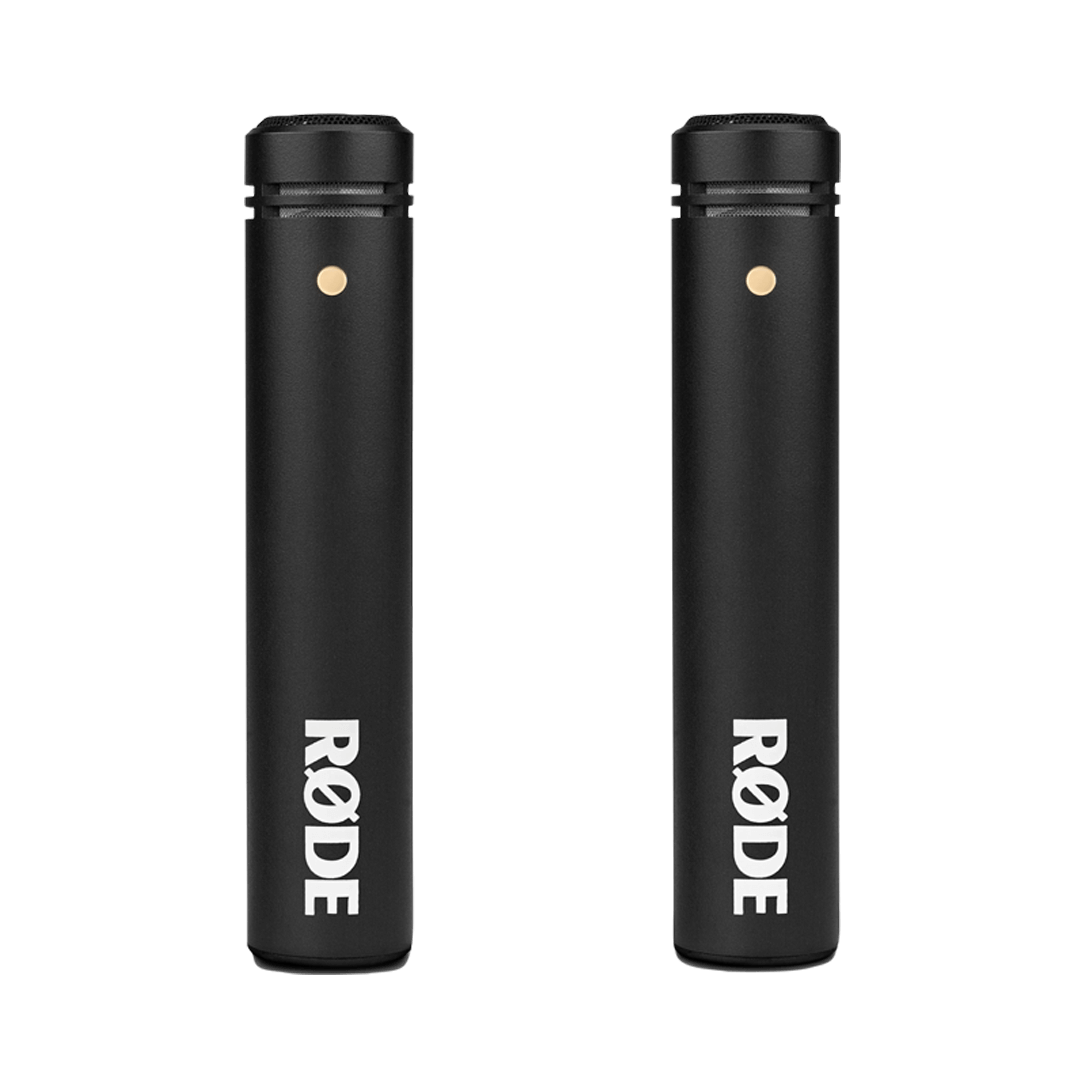
Stand
How was I going to do this? I found https://pianomount.com/product/mirizio-microphone-mount-complete-assembly/, which was definitely…something. But it was out of my price range and I hadn’t heard of anyone using it.
The “two mic stand” option was unacceptable. I wasn’t going to be moving them in and out of the way, and I wasn’t going to let them permanently live in my parlor.
Attaching mics to the piano by means of tape, glue, or screw was right out. It may be a bargain baby grand but it’s still more expensive than my first two cars and I will not be defacing it.
Desktop mic stands were an idea, but I was worried about them creating resonance and interfering with the recording. (Yeah, I don’t know much about recording, but I do know stuff in the same room with a piano tends to vibrate. It’s a thing.)
So—one mic stand, two mics. I bought an Amazon brand mic stand and this little doohicky:
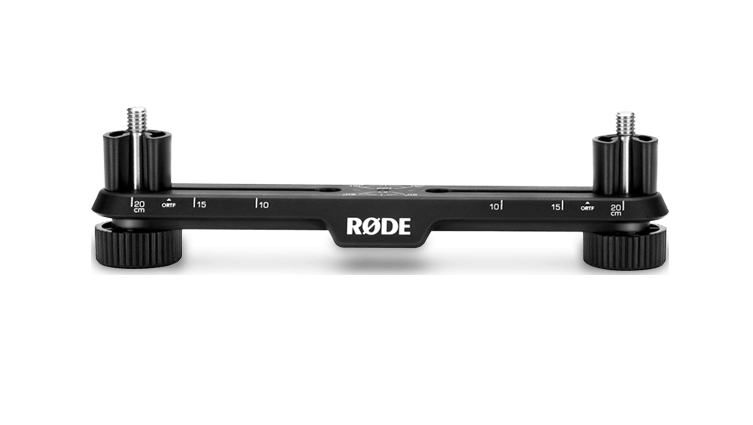
Yeah, it’s $50 for a piece of plastic, but it seems to be good, sturdy plastic. I combined it with a $13 ball joint and achieved:
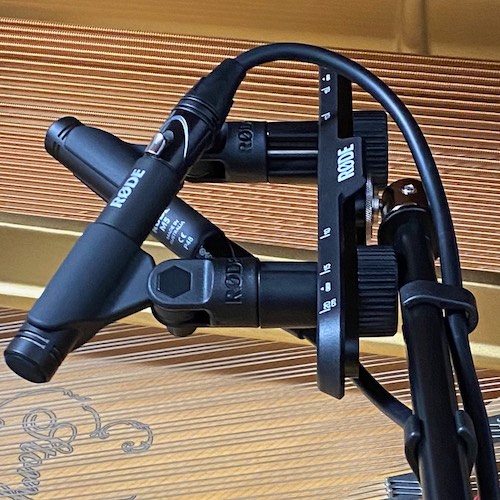
Basically saving myself $300 over something like:
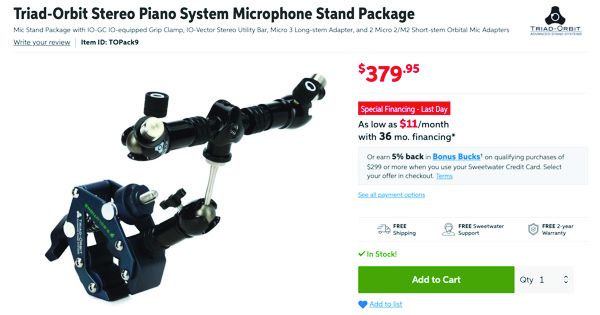
Interface
This is maybe the only interesting or, daresay, good decision I made in this process. My requirements were something small and mobile so that, again, it would be discreet and easily tucked out of site. Since I went with condenser microphones, I needed something that supplied 48V phantom power. But, conflictingly, I also wanted the device to be powered by whatever it was plugged into, be it a laptop or tablet. Finally, it needed to be USB-C, since this is 2023.
Quite the litany of requirements. And I don’t get to often say this about technology, but I found something that supplied all this—and more.
Enter the Audient EVO 4:
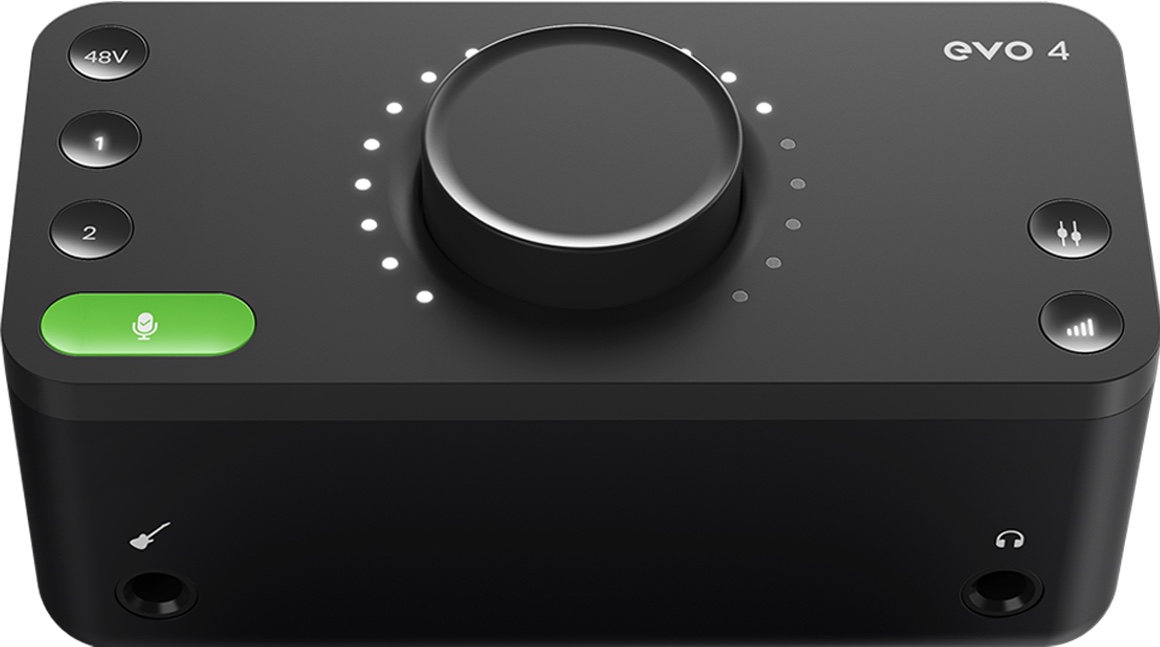
Not only does this thing do everything listed above, but it has this great little feature I call the “dumbass button.” I don’t know if I started calling it that after myself, or if I heard it in a video review someplace, but what this button does is listen while you audition a performance and set the levels correctly to avoid clipping during recording. It basically makes recording dumbass-proof, which is exactly what I need in my life.
Technique
Ok. Now I have my supplies. Purchased on a sub $500 budget. The next question was: what am I going to do with them?
I heard that a friend of a friend miked his piano with matched pair at a “co-incident angle.” I didn’t know what that was, but it led me down a trail of learning some miking techniques, such as ORTF. That Rode stereo bar even had graphics printed on it to angle mics correctly for ORTF.[4]
Nothing else confirmed this was an appropriate approach for the piano, but something that “simulates the distance between the human ears” sounded good to me. So I could set the microphones up in an ORTF arrangement, while following advice such as:
position the microphone approximately 8 inches from the piano hammers (to reduce mechanical noise) and 8 – 11 inches above the strings
This was all…easier said than done. In fact, I went through 4+ setups, painstakingly recording each position for comparison:
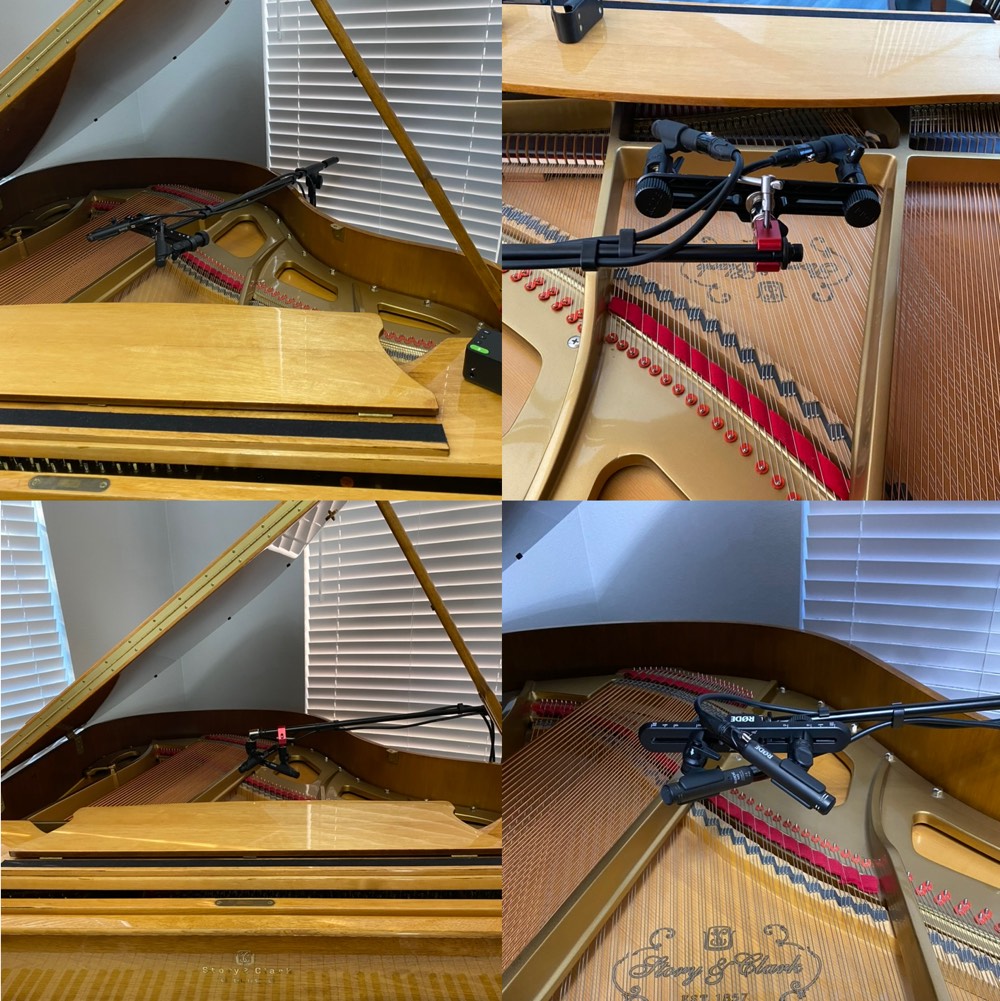
And the outcome was…I couldn’t hear a difference between any of them. To my amateur ears they all sounded exactly the same. I left the mics in the last place I’d put them (bottom right in the pic).
Plus, the whole setup was fairly compact and almost invisible to anyone looking into the parlor.
Results
After this low-effort, budget, slipshod, ramshackle, inexpert, slouching approach I was prepared to be underwhelmed. I didn’t know what I was doing. I made compromises capitulating to concerns such as:
- cost
- ease
- appearance
But there’s no such thing as a free lunch. There was no way I was going to be happy with the sound.
BUT I WAS. I was blown away. The clarity, isolation, and separation of my recordings are, IMO, exceptional.
I may just have low standards. Or not have any idea what I’m talking about. But when it comes to impressing the only critic who matters to me…my setup aced the test.
You can judge for yourself:
Like something with aftertouch. ↩︎
One of my “composer rules” is to permit as little friction as possible between inspiration and execution. I need at least one instrument lying around that I can touch and, uhh, in the common parlance “jam” on. This rules out pure midi controllers because I’ll lose interest in my idea by the time I’ve booted up my computer, DAW, and plugin. ↩︎ ↩︎
I haven’t published a post on this blog in four years. Life gets in the way. ↩︎
Or would, anyway, if I used the stereo bar as the manufacturer intended, and not how I purposed it… ↩︎